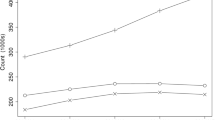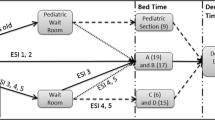Abstract
This study was conducted to identify the event characteristics of mass gatherings that predict patient presentation rates held in a southeastern US university community. We conducted a retrospective review of all event-based emergency medical services (EMS) records from mass gathering patient presentations over an approximate 23 month period, from October 24, 2009 to August 27, 2011. All patrons seen by EMS were included. Event characteristics included: crowd size, venue percentage filled seating, venue location (inside/outside), venue boundaries (bounded/unbounded), presence of free water (i.e., without cost), presence of alcohol, average heat index, presence of climate control (i.e., air conditioning), and event category (football, concerts, public exhibitions, non-football athletic events). We identified 79 mass gathering events, for a total of 670 patient presentations. The cumulative patron attendance was 917,307 persons. The patient presentation rate (PPR) for each event was calculated as the number of patient presentations per 10,000 patrons in attendance. Overdispersed Poisson regression was used to relate this rate to the event characteristics while controlling for crowd size. In univariate analyses, increased rates of patient presentations were strongly associated with outside venues [rate ratio (RR) = 3.002, p < 0.001], unbounded venues (RR = 2.839, p = 0.001), absence of free water (RR = 1.708, p = 0.036), absence of climate control (RR = 3.028, p < 0.001), and a higher heat index (RR = 1.211 per 10-unit heat index increase, p = 0.003). The presence of alcohol was not significantly associated with the PPR. Football events had the highest PPR, followed sequentially by public exhibitions, concerts, and non-football athletic events. In multivariate models, the strong predictors from the univariate analyses retained their predictive significance for the PPR, together with heat index and percent seating. In the setting of mass event medical care, we note that several factors are strongly associated with an increased patient census, including outside (external) or unbounded venues, the absence of fee water (i.e., without cost), no climate control, percent (occupied) seating, and increasing heat index. Although the presence of alcohol is noted to increase patient needs, it does not do so significantly. Regarding event type, collegiate football games have the highest patient census among the range of other events studied. These findings should be considered during the process of EMS resource planning for mass gatherings.

Similar content being viewed by others
References
De Lorenzo RA (1997) Mass gathering medicine: a review. Prehosp Disaster Med 12(1):68–72 (PubMed PMID: 10166378)
Arbon P (2007) Mass-gathering medicine: a review of the evidence and future directions for research. Prehosp Disaster Med 22(2):131–135 (PubMed PMID: 17591185)
Hartman N, Williamson A, Sojka B, Alibertis K, Sidebottom M, Berry T, Hamm J, O’Connor RE, Brady WJ (2009) Predicting resource use at mass gatherings using a simplified stratification scoring model. Am J Emerg Med 27(3):337–343
Wassertheil J, Keane G, Fisher N, Leditschke JF (2000) Cardiac arrest outcomes at the Melbourne Cricket Ground and shrine of remembrance using a tiered response strategy-a forerunner to public access defibrillation. Resuscitation 44(2):97–104
Arbon P, Bridgewater FH, Smith C (2001) Mass gathering medicine: a predictive model for patient presentation and transport rates. Prehosp Disaster Med 16(3):150–158 (PubMed PMID: 11875799)
Zeitz KM, Zeitz CJ, Arbon P (2005) Forecasting medical work at mass-gathering events: predictive model versus retrospective review. Prehosp Disaster Med 20(3):164–168 (PubMed PMID: 16018504)
Milsten AM, Maguire BJ, Bissell RA, Seaman KG (2002) Mass-gathering medical care: a review of the literature. Prehosp Disaster Med 17(3):151–162 (PubMed PMID: 12627919)
Bowdish GE, Cordell WH, Bock HC, Vukov LF (1992) Using regression analysis to predict emergency patient volume at the Indianapolis 500 mile race. Ann Emerg Med 21(10):1200–1203 (PubMed PMID: 1416297)
Perron AD, Brady WJ, Custalow CB, Johnson DM (2005) Association of heat index and patient volume at a mass gathering event. Prehosp Emerg Care 9(1):49–52 (PubMed PMID: 16036828)
Baker WM, Simone BM, Niemann JT, Daly A (1986) Special event medical care: the 1984 Los Angeles Summer Olympics experience. Ann Emerg Med 15(2):185–190 (PubMed PMID: 3946862)
Nardi R, Bettini M, Bozzoli C, Cenni P, Ferroni F, Grimaldi R, Pezzi A, Vivoli M, Salcito D, Gordini G, Gambarin R, Lavezzi E, Lippi R, Mazzolani T, Montecuccoli F, Prati D, Simonetti N, Ugolini A, Zen C (1997) Emergency medical services in mass gatherings: the experience of the Formula 1 Grand Prix ‘San Marino’ in Imola. Eur J Emerg Med 4(4):217–223 (PubMed PMID: 9444507)
Whipkey RR, Paris PM, Stewart RD (1984) Emergency care for mass gatherings Proper planning to improve outcome. Postgrad Med 76(2):44–47 (PubMed PMID: 6462973)
Leonard RB (1996) Medical support for mass gatherings. Emerg Med Clin North Am 14(2):383–397 (PubMed PMID: 8635414)
Pons PT, Holland B, Alfrey E, Markovchick V, Rosen P, Dinerman N (1980) An advanced emergency medical care system at National Football League games. Ann Emerg Med 9(4):203–206 (PubMed PMID: 7369564)
DeLorenzo RA, Gray BC, Bennett PC, Lamparella VJ (1989) Effect of crowd size on patient volume at a large, multipurpose, indoor stadium. J Emerg Med 7(4):379–384 (PubMed PMID: 2600396)
Author information
Authors and Affiliations
Corresponding author
Ethics declarations
Conflict of interest
The authors declare that they have no conflict of interest.
Statement of human and animal rights
This paper is based upon a retrospective analysis of event characteristics. No impact nor alteration in patient management was involved. Internal Review Board reviewed and approved this study as a retrospective analysis.
Informed consent
This is a retrospective study, for this reason informed consent was'nt obtained from all individuals participants included in the study.
Rights and permissions
About this article
Cite this article
Locoh-Donou, S., Yan, G., Berry, T. et al. Mass gathering medicine: event factors predicting patient presentation rates. Intern Emerg Med 11, 745–752 (2016). https://doi.org/10.1007/s11739-015-1387-1
Received:
Accepted:
Published:
Issue Date:
DOI: https://doi.org/10.1007/s11739-015-1387-1




